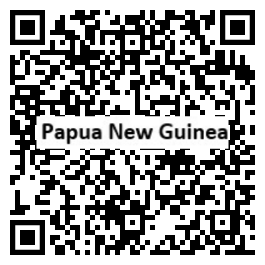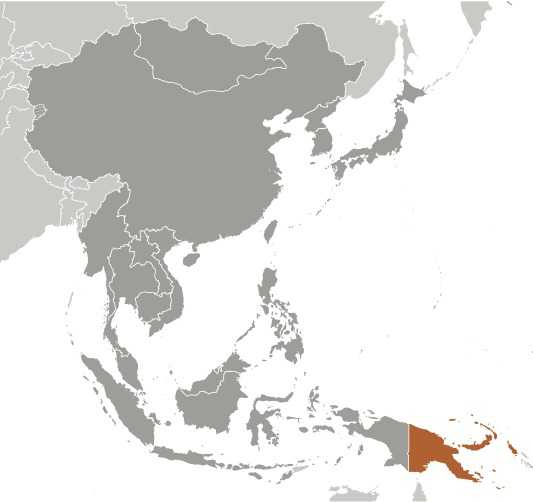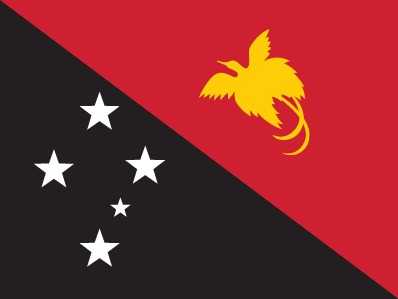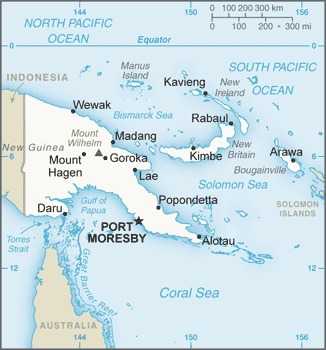Introduction
Background
The eastern half of the island of New Guinea was divided between Germany (north) and the UK (south) in 1885. The latter area was transferred to Australia in 1902, which occupied the northern portion during World War I and continued to administer the combined areas until independence in 1975. Since 2001, the island of Bougainville has had autonomy, with many national powers devolved to the region.
Geography
Area
total : 462,840 sq km
land: 452,860 sq km
water: 9,980 sq km
Climate
tropical; northwest monsoon (December to March), southeast monsoon (May to October); slight seasonal temperature variation
Natural resources
gold, copper, silver, natural gas, timber, oil, fisheries
People and Society
Population
total: 10,046,233
Ethnic groups
Melanesian, Papuan, Negrito, Micronesian, Polynesian
Languages
Tok Pisin (official), English (official), Hiri Motu (official), some 839 living indigenous languages are spoken (about 12% of the world's total); many languages have fewer than 1,000 speakers
Religions
Protestant 64.3% (Evangelical Lutheran 18.4%, Seventh Day Adventist 12.9%, Pentecostal 10.4%, United Church 10.3%, Evangelical Alliance 5.9%, Anglican 3.2%, Baptist 2.8%, Salvation Army 0.4%), Roman Catholic 26%, other Christian 5.3%, non-Christian 1.4%, unspecified 3.1% (2011 est.)
Population growth rate
2.26% (2024 est.)
Government
Government type
parliamentary democracy under a constitutional monarchy; a Commonwealth realm
Capital
name: Port Moresby
Executive branch
chief of state: King CHARLES III (since 8 September 2022); represented by Governor General Grand Chief Sir Bob DADAE (since 28 February 2017)
head of government: Prime Minister James MARAPE (since 30 May 2019)
Legislative branch
description: unicameral National Parliament (111 seats; 89 members directly elected from open constituencies and 22 governors directly elected from provincial constituencies; members serve 5-year terms)
Economy
Economic overview
lower middle-income Pacific island economy; primarily informal agrarian sector; natural resource-rich; key liquified natural gas exporter; growing young workforce; slow post-pandemic recovery; increasingly impoverished citizenry; sustainable inflation
Real GDP (purchasing power parity)
$42.9 billion (2023 est.)
$41.779 billion (2022 est.)
$39.728 billion (2021 est.)
Real GDP per capita
$4,200 (2023 est.)
$4,100 (2022 est.)
$4,000 (2021 est.)
Agricultural products
oil palm fruit, coconuts, bananas, fruits, sweet potatoes, game meat, yams, root vegetables, sugarcane, vegetables (2022)
Industries
oil and gas; mining (gold, copper, and nickel); palm oil processing; plywood and wood chip production; copra crushing; construction; tourism; fishing; livestock (pork, poultry, cattle) and dairy farming; spice products (turmeric, vanilla, ginger, cardamom, chili, pepper, citronella, and nutmeg)
Exports
$11.625 billion (2021 est.)
$9.175 billion (2020 est.)
$11.236 billion (2019 est.)
Exports - partners
Japan 26%, China 22%, Australia 11%, South Korea 10%, Taiwan 9% (2022)
Exports - commodities
natural gas, gold, palm oil, crude petroleum, copper ore (2022)
Imports
$6.303 billion (2021 est.)
$5.282 billion (2020 est.)
$6.329 billion (2019 est.)
Imports - partners
China 26%, Australia 23%, Singapore 16%, Malaysia 9%, Indonesia 4% (2022)
Imports - commodities
refined petroleum, rice, plastic products, excavation machinery, trucks (2022)
Exchange rates
kina (PGK) per US dollar -
Page last updated: Wednesday, July 24, 2024




